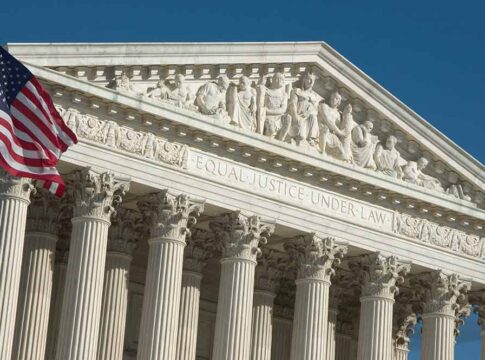Supreme Court Justice Ruth Bader Ginsburg serves as a reminder to Democrats of what happens when one of their own stays for too long. At least according to their expectations. Senate Democrats are attempting to persuade Justice Sonia Sotomayor to retire early. This will allow the Senate to ask President Biden to nominate a new left-leaning Supreme Court Justice. Justice Sotomayor has made it clear that she has no intention of leaving. Following Donald Trump’s victory last week, Democrats are desperate to keep a reasonable liberal presence on the court.
Democrats Face a Dilemma Over Sotomayor’s Seat
In a surprising turn of events, Senate Democrats are debating whether to pressure Supreme Court Justice Sonia Sotomayor to resign. This debate has heated up following President-elect Donald Trump’s electoral victory and the Democrats’ loss of the Senate majority in the 2024 election. The situation has created a complicated political landscape, with multiple factors influencing the debate.
Concerns about Justice Sotomayor’s health have been central to the debate. At 70 years old and suffering from type 1 diabetes, some senators are hesitant to call for her resignation. Others argue that her early retirement may provide an opportunity to appoint a younger, more like-minded justice prior to the change of administration. This strategic consideration has sparked intense debate within the Democratic Party.
Justice Sonia Sotomayor has no plans to resign from Supreme Court, sources tell ABC News. https://t.co/224XD32HwA
— ABC News (@ABC) November 11, 2024
Time constraints and potential road blocks
The timeline for such a move is extremely constrained. Any confirmation process must be completed before the 119th Congress is sworn in on January 3. This leaves little room for manoeuvre, and many people are skeptical of the feasibility of such a rushed procedure. A former Senate Democratic aide expressed doubt that Sotomayor would resign and a replacement would be confirmed on time.
“That is insane.” “That is not going to happen.”
The possibility of opposition from within the Senate adds to the complexity. If retiring Sen. Joe Manchin, I-W.Va., chooses not to support the replacement nominee, he could pose a significant obstacle. Due to this uncertainty, some senators have proposed alternative approaches, such as focusing on confirming lower-court judges during the lame-duck session.
.@WSJ EXCLUSIVE: Justice Sotomayor rejects leftist plans to force her into early retirement: "she has no plans to retire, people close to her said" — Communist left will have to find another way to destroy an independent Supreme Court. https://t.co/Y9yRC7T4h1 via @WSJ
— Tom Fitton (@TomFitton) November 10, 2024
Potential Replacement with Bipartisan Support
Despite the challenges, discussions about potential replacements continue. Circuit Judge J. Michelle Childs of Washington, DC, has emerged as the front-runner, with support from both parties. Her moderate stance and bipartisan support, including from President Biden and Republican Senator Lindsey Graham, make her a compelling candidate in this politically charged environment.
“I can’t think of a better person for President Biden to consider for the Supreme Court than Michelle Childs”
However, the idea of pressuring Sotomayor to retire has sparked opposition, particularly among progressives who regard it as “ableist.” This criticism emphasizes the delicate balance that Democrats must strike between strategic political considerations and respect for the judiciary’s independence.
Sotomayor’s stance and historical context
Despite the heated debate, Justice Sotomayor has made her position clear. She has stated that she intends to remain on the court, emphasizing the importance of her presence. This firm stance echoes similar situations in recent history, most notably the pressure on Justice Ruth Bader Ginsburg to retire during President Obama’s tenure.
The ongoing debate over Justice Sotomayor’s possible retirement highlights the complex interplay of judicial independence, political strategy, and the Supreme Court’s long-term ideological balance. As the clock ticks down to the transition of power, Democrats are faced with a decision that could have far-reaching consequences for the nation’s highest court.
Sources:


